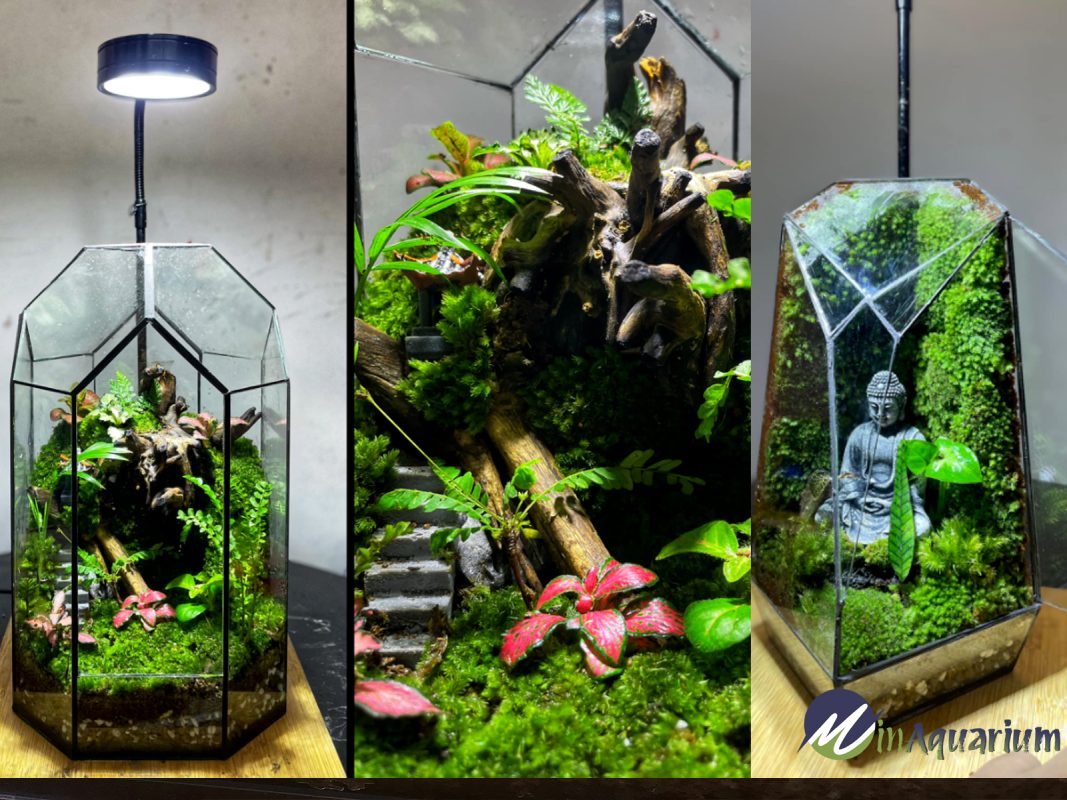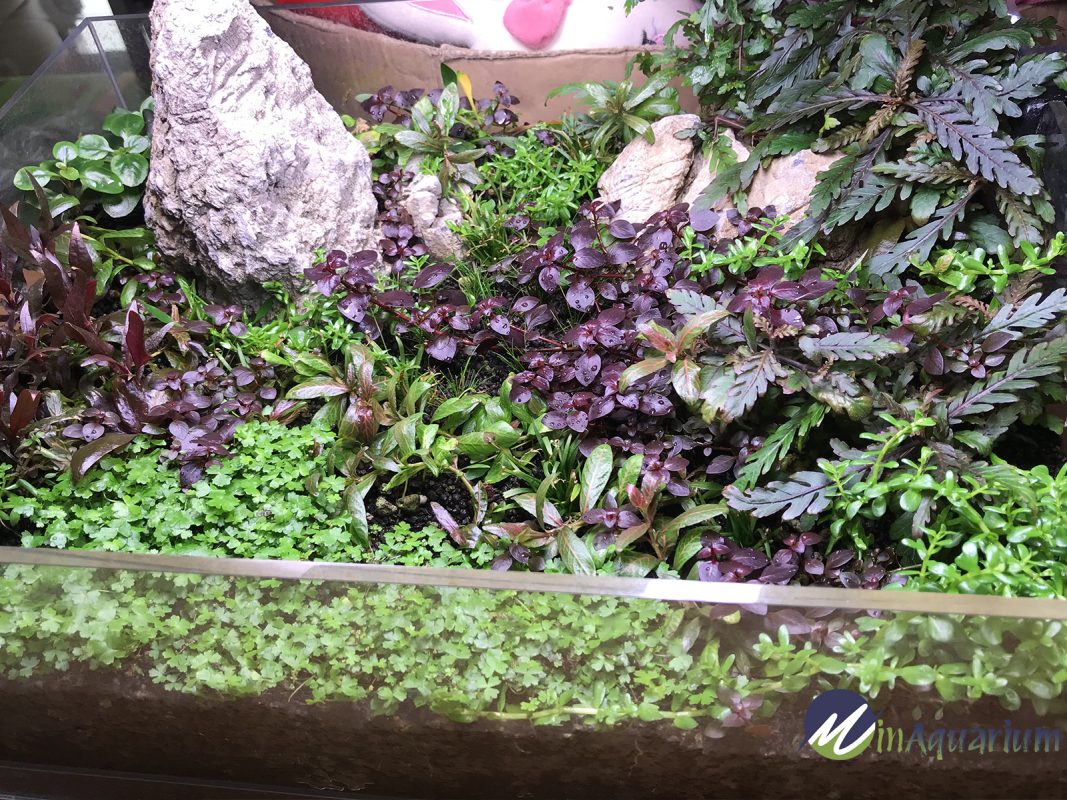Blogs
Terrariums | A Self-Sustaining Ecosystem for Plant Enthusiasts
Have you ever dreamed of bringing a lush, vibrant miniature ecosystem into your home? Terrariums offer a captivating solution, providing a self-contained world where plants thrive in a harmonious balance of moisture, light, and air circulation. This article delves into the captivating world of terrariums, guiding you through their history, types, creation, and care, equipping you with the knowledge to cultivate your own miniature paradise.
Understanding Terrariums: A Glimpse into Their History and Types
A Journey Through Time: The Evolution of Terrariums
Terrariums have a rich and fascinating history, dating back to 1842 when Nathaniel Bagshaw Ward, a botanist, inadvertently created the first Wardian case. This ingenious invention, initially designed to transport plants across continents, soon captivated Victorian England, becoming a symbol of scientific innovation and horticultural prowess.
Unveiling the Two Worlds of Terrariums: Open and Closed
Terrariums fall into two distinct categories: closed and open. Closed terrariums, resembling miniature greenhouses, boast a sealed environment that traps moisture, creating a humid microclimate ideal for tropical plants like orchids, ferns, and mosses. Open terrariums, on the other hand, offer a more open environment, suitable for plants adapted to drier conditions, such as cacti and succulents.
Choosing the Right Container: A Foundation for Your Terrarium
Selecting the perfect container for your terrarium is crucial. Glass containers, ranging from fishbowls to decorative jars, provide excellent light transmission and visibility. Consider the size and shape of your chosen container, ensuring it complements the plants you intend to house.
Creating Your Own Terrarium: A Step-by-Step Guide
Assembling the Layers: A Foundation for Life
Creating a terrarium involves a series of meticulous steps, each contributing to the success of your miniature ecosystem. Begin by adding a drainage layer of clean gravel or crushed stone, ensuring proper drainage and preventing waterlogging. Next, introduce a thin layer of activated charcoal to absorb impurities and maintain a healthy environment for your plants.
The Vital Layer: Choosing the Right Soil Mix
The soil mix plays a critical role in providing nutrients and support for your terrarium plants. Opt for a well-draining, sterile potting mix specifically designed for terrariums. Avoid using garden soil, which can harbor unwanted pests and pathogens.

Introducing the Green Jewels: Selecting the Perfect Plants
Choosing the right plants is essential for the success of your terrarium. Consider the light and humidity requirements of each plant, ensuring they are compatible with your chosen environment. Popular choices for closed terrariums include ferns, mosses, orchids, and air plants, while open terrariums are well-suited for succulents, cacti, and other drought-tolerant species.
The Finishing Touches: Decorating Your Terrarium
Once your plants are in place, unleash your creativity by adding decorative elements. Pebbles, driftwood, miniature figurines, and colorful stones can enhance the aesthetic appeal of your terrarium, transforming it into a miniature world overflowing with charm.
Maintaining Your Terrarium: A Journey of Nurturing
Proper maintenance is essential for the continued health and beauty of your terrarium. Provide indirect sunlight, water your plants sparingly, and prune them regularly to ensure optimal growth. Monitor the humidity levels, ensuring they remain within the appropriate range for your chosen plants.
The Art of Choosing Terrarium Plants: A Guide to Success
Unveiling the Secrets of Closed Terrarium Plants
Closed terrariums offer a humid, sheltered environment, making them ideal for tropical plants that thrive in high humidity and low light conditions. Ferns, with their delicate fronds, add a touch of elegance, while mosses create a lush, verdant carpet. Orchids, known for their exotic blooms, bring a touch of vibrancy, and air plants, with their ability to absorb moisture from the air, thrive without the need for soil.
Exploring the World of Open Terrarium Plants
Open terrariums, with their drier conditions, are well-suited for plants adapted to arid environments. Cacti, with their spiny exterior and resilience, add a touch of desert charm, while succulents, with their fleshy leaves and diverse shapes, provide a captivating visual display. Other drought-tolerant options include echeverias, aloes, and haworthias, each offering unique textures and colors.

Creating a Harmonious Balance: Choosing Compatible Plants
When selecting plants for your terrarium, consider their compatibility. Choose plants with similar light and humidity requirements to ensure they thrive together. Avoid overcrowding your terrarium, as this can lead to competition for resources and poor growth.
Ensuring Plant Health: Avoiding Common Mistakes
Overwatering is a common pitfall in terrarium care. Allow the soil to dry out slightly between waterings, and avoid misting the leaves excessively. Ensure proper drainage to prevent root rot. Monitor your plants regularly for pests and diseases, and take prompt action if necessary.
Unveiling the Benefits of Terrariums: A Haven for Nature Lovers
A Touch of Nature Indoors: Bringing the Outdoors In
Terrariums offer a unique way to bring the vitality of nature indoors, creating a calming and invigorating atmosphere. Studies have shown that exposure to plants can reduce stress and improve mood, making terrariums a valuable addition to any home or workspace.
A Low-Maintenance Oasis: Embracing Simplicity
Terrariums are relatively low-maintenance, requiring minimal attention compared to traditional gardens. Once established, they require only occasional watering, pruning, and cleaning, making them an ideal choice for busy individuals or those with limited gardening experience.
A Showcase of Creativity: Expressing Your Artistic Flair
Creating a terrarium allows you to unleash your creativity, transforming an ordinary container into a miniature world that reflects your personal style. From choosing unique plants and decorative elements to arranging them in visually appealing ways, you can mold your terrarium into a personalized expression of your artistic vision.
FAQs: Addressing Common Terrarium Queries
1. How often should I water my terrarium plants?
The frequency of watering depends on the type of plants and the size of your terrarium. As a general guideline, water sparingly, allowing the soil to dry out slightly between waterings. Overwatering can lead to root rot and other problems.
2. How much light does my terrarium need?
The light requirements for terrariums vary depending on the plants you choose. Most closed terrariums thrive in indirect sunlight, while open terrariums may require brighter light conditions. Avoid placing your terrarium in direct sunlight, as this can overheat the plants and damage the foliage.
3. How do I maintain the humidity in my closed terrarium?
Closed terrariums are designed to retain moisture, so misting is usually not necessary. However, if you notice the walls of your terrarium becoming foggy, you can open the lid for a short time to allow excess moisture to escape.
4. What should I do if I see mold or fungus growing in my terrarium?
Mold or fungus growth in a terrarium can indicate excessive moisture or poor air circulation. Remove any affected plants or soil and dispose of them properly. Clean the affected area with a mild bleach solution and improve air circulation by opening the lid or increasing ventilation.
5. Can I add animals to my terrarium?
Adding animals to a terrarium is not recommended, as it can create an unhealthy environment for both the animals and the plants. The enclosed space and limited resources can lead to stress and health problems for the animals.
Conclusion: A World of Endless Possibilities
Cultivating a terrarium is an enriching journey that allows you to connect with nature, unleash your creativity, and experience the joy of nurturing life within a miniature ecosystem. This article has provided you with the essential knowledge and guidance to create and care for your own terrarium, inviting you to explore the fascinating world of these self-sustaining miniature worlds.

